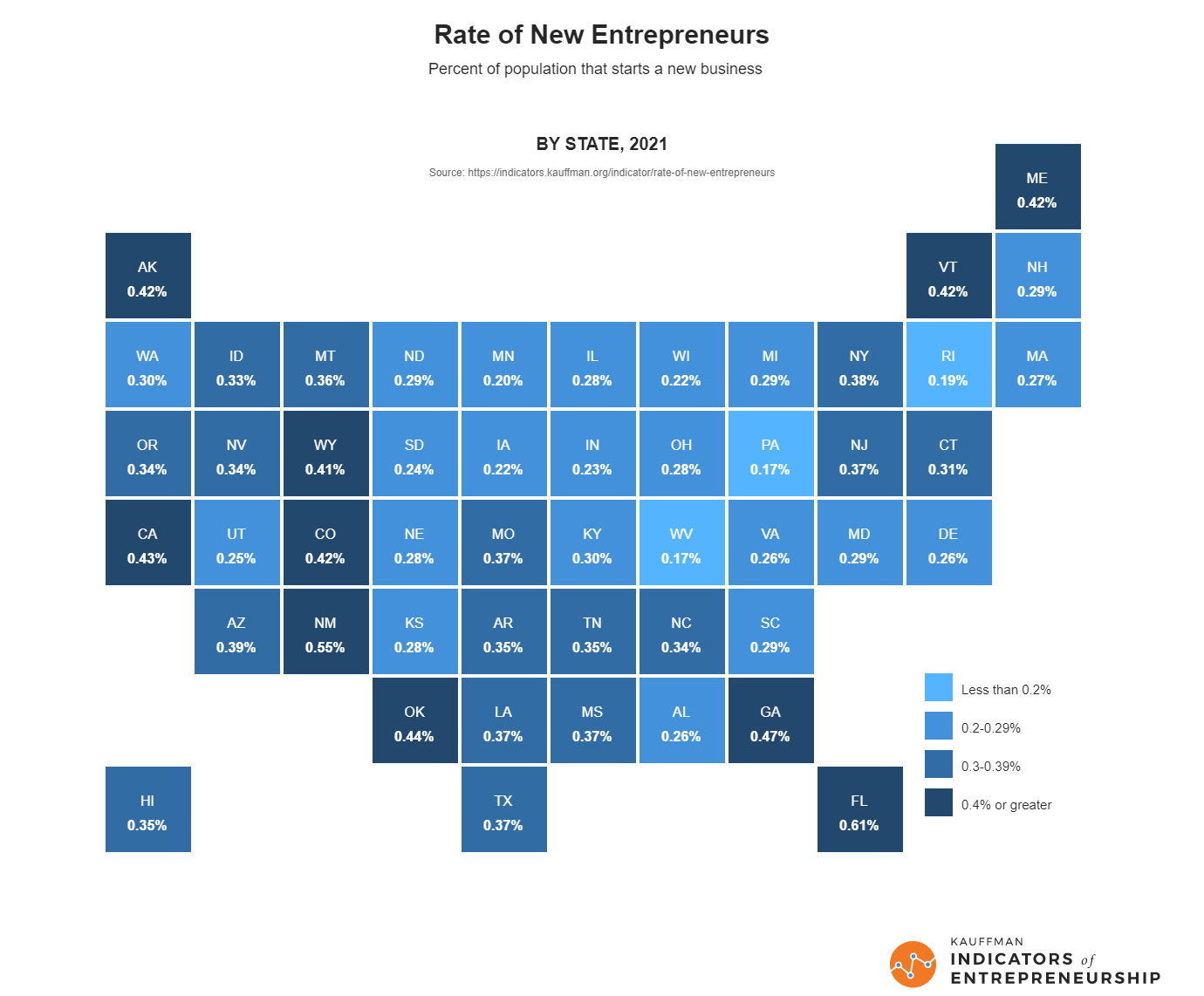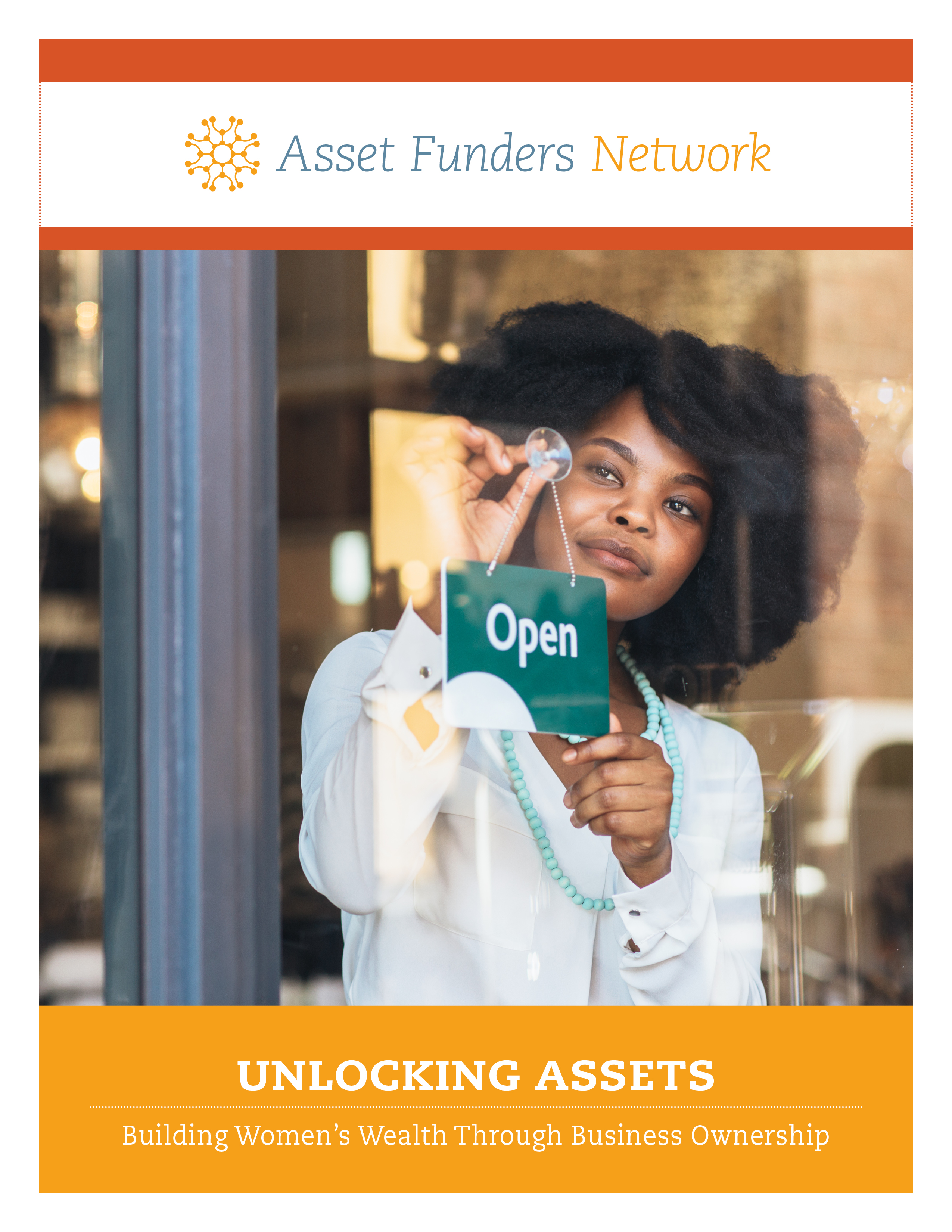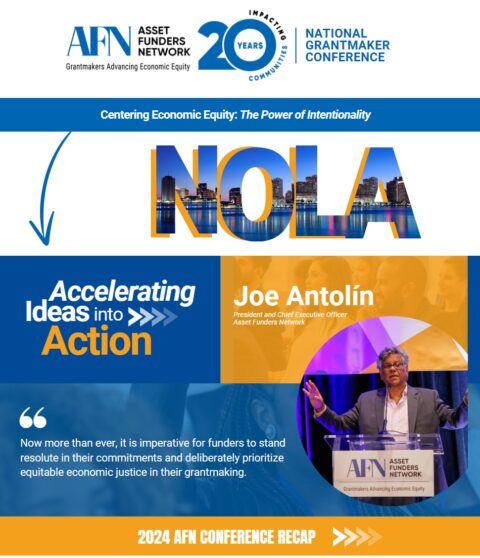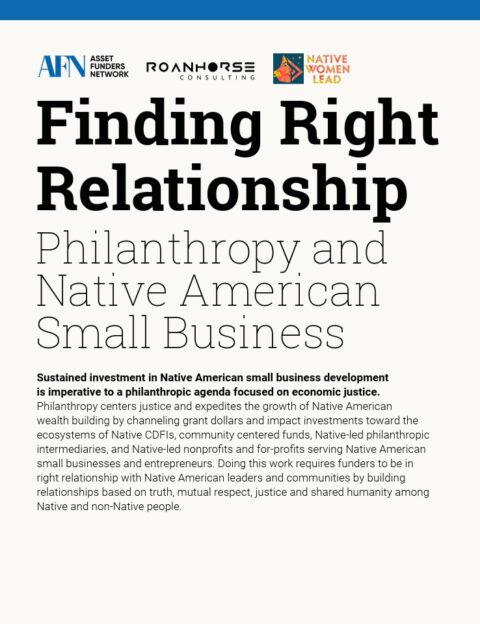
Starting and owning a business or microenterprise or becoming part of a co-op or employee stock ownership (ESOP) helps realize financial resilience and the promise of upward mobility. The median net worth of business owners is almost 2.5x higher than non-business owners. For a black woman, the difference is more than 10x. For a Latino man, the difference is 5x.
However, capital investment strategies, peer networks, sectoral segregation, and legal barriers too often restrict the equitable distribution of resources and opportunities away from women and people of color.
A reimagined equitable economy catalyzed by philanthropy will help many already on the path to business ownership. Small, micro, co-op or ESOP require investment and nurturing to realize equitable opportunity. Achieving equity requires shifts in capital, networks, and opportunity for innovation. Expanding the universe of business owners requires intentionality and innovation in planning, design, implementation, and funding.
Explore Employment
Unlocking Assets: Building Women’s Wealth Through Business Ownership
The third in a series that builds off AFN’s earlier publication, Women & Wealth, reveals that while data shows women-owned businesses are growing in number, the businesses are typically smaller in size and generate lower revenues and profits for their owners and employees.
Employee-Owned Firms in the COVID-19 Pandemic
This brief by The Employee Ownership Foundation describes how Majority-Owned ESOP & Other Companies Have Responded to the Covid-19 Health and Economic Crises.
Visit the EOF website to learn more or read it here
Gender, Age, and Small Business Financial Outcomes
This research report by the JPMorgan Chase & Co. Institute focuses on small business financial performance, with a specific emphasis on differences in outcomes by owner age and gender.
Visit the JPMorgan Chase website to learn more or read it here
Why It’s Important
Grantmakers are investing in ways to build a resilient, inclusive economy through increased opportunity for ownership of economic activity:
Business helps build communities
Better means for a secure retirement
Higher business profitability when capital is available to start and grow
Increases wealth – median net worth for Black business owners is 12x higher than Black nonbusiness owners.
Increase equity – Women business owners have 40% higher average household incomes and 48% more household net worth
Extends economic security to employee owners via ESOPs
Grantmaking Strategies
Philanthropy extends capital to start or grow microbusinesses, explores strategies for mentoring and education, incubates entrepreneurial efforts, supports equitable economic development, and makes possible co-op or employee stock ownership plans (ESOP). AFN members share approaches and collaborate on ideas across the country.
Employer microbusinesses typically have five or fewer employees, require less than $50,000 in start-up capital, and are often owned by women or Black, Latino, Asian, or Native American individuals. While some microbusinesses are early-stage small businesses that will grow over time, most are a microbusiness.
There are two types of microenterprises: employer firms and those are sole proprietorship and non-employers. Non-employer microbusiness include housekeepers, consultants, creatives, professional service providers, freelancers in any field, and many workers in the gig and care economies. A microbusiness may also carve its own specific space within an industry.
As of the latest census, 2.58 million Black-owned businesses support 3.56 million U.S. jobs, generating $150 billion in annual revenue. 96% of the 2.58 million Black-owned firms are non-employer firms (or sole proprietors), compared to 81% of all U.S. firms.
Similarly, 11.6 million privately owned businesses are owned and operated by women— a growth rate of 114% between 1997 and 2017 (2.5X the average for all businesses). These businesses employ close to 9 million people, generating more than $1.7 trillion in total revenue.
Another strategy are ESOPs — a retirement plan that purchases shares of a company and holds them on behalf of employees who participate in the plan. When the company share price rises, plan participants share in the financial gains. When the share price falls, plan participants share in the loss. When the employee retires or leaves the firm, she or he is paid market value for their ownership stake in the business. For this reason, employees at ESOPs are known as employee owners. Notably, even during Covid, ESOPs kept considerably more money in employees’ hands—and in the economy—than non-ESOPs.
Sustainable, healthy business ownership is a critical pathway to grow wealth. Philanthropic intervention is needed for many persons of color or women to overcome severe capital challenges to realize success as business owners.







